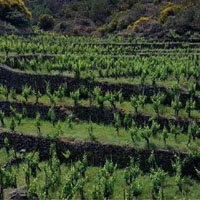Land set-up systems in Italy: A long tradition of soil and water conservation sewed up to a variety of pedo-climatic environments

HTML: 1149
All claims expressed in this article are solely those of the authors and do not necessarily represent those of their affiliated organizations, or those of the publisher, the editors and the reviewers. Any product that may be evaluated in this article or claim that may be made by its manufacturer is not guaranteed or endorsed by the publisher.
Land set-up systems in Italy were and, in a few cases, still are integral parts of agricultural landscapes. The soils of Italy mirror a wide variety of climates and morphologies and derive from a great diversity of parent materials influenced by different soil temperature and moisture regimes. Furthermore, their development was influenced by several anthropogenic activities over time including land settings. Land set-up systems have been widely used throughout the Italian soilscape to regulate surface and underground water and to improve the physical soil features in a way that ensures mixed herbaceous and tree-crops cultivation. In recent times, new technologies have been introduced in agroforestry exploitation of the land, while the ancient but tested hydraulic soil systems have been abandoned. As a result, a great part of Italian soilscapes is prone to water erosion and floods, an unforeseen impact, which can be counterbalanced by good soil management practices. Moreover, new pedotechniques have been recently adopted, transforming soils and landscapes, but generating sometimes soil degradation issues. After presenting the main features characterizing Italian soils and landscapes, we describe all the historical land set-up systems adopted over time, highlighting their positive functions in terms of both soil conservation and agricultural production. We also emphasise the importance of maintaining such land settings both as distinctive parts of cultural landscapes and strategies of soil conservation, and the need of developing new systems based on the principles of environmental sustainability.
Highlights
- Italy shows different morphological regions that are characterized by different soilscapes.
- Historical land set-up systems are distinctive constituents of the Italian cultural landscapes.
- Land settings have been adopted over time to protect soil and increase agricultural production.
- New pedotechniques have been recently adopted in large scale farming with no consideration of soil conservation.
- Maintenance of historical land set-up systems and development of new systems is needed.
How to Cite
PAGEPress has chosen to apply the Creative Commons Attribution NonCommercial 4.0 International License (CC BY-NC 4.0) to all manuscripts to be published.

 https://doi.org/10.4081/ija.2020.1760
https://doi.org/10.4081/ija.2020.1760



